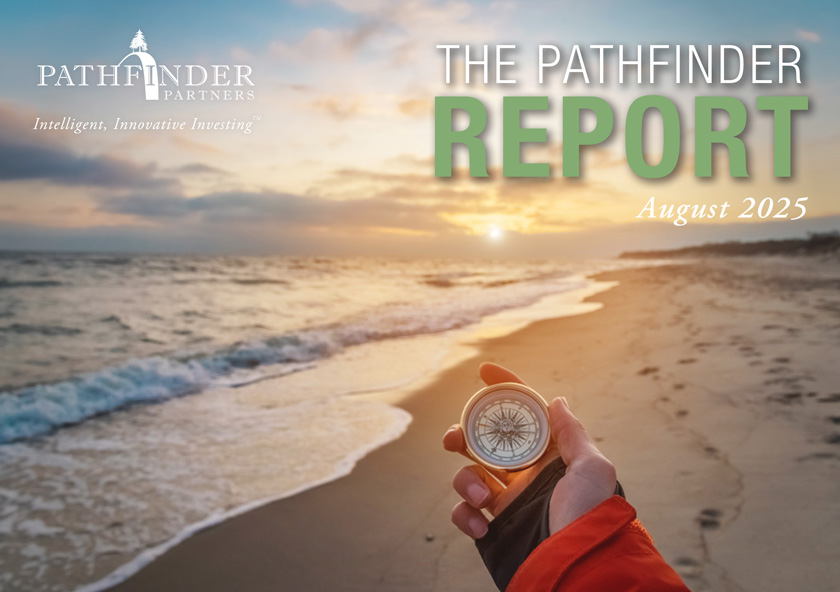Charting the Course
Demographics, High Interest Rates Torpedo Homeownership, Fueling Apartment Demand
By Mitch Siegler, Senior Managing Director

We’ve been talking about the decline in the homeownership rate for some time. The attitudes of many in the millennial and Gen X generations, very different than those of previous generations, had much to do with this. Economics – notably the dramatic rise in home prices the past several years coupled with a doubling in interest rates – have also played a major role.
In response to rising inflation, the Federal Reserve (Fed) began hiking interest rates in the spring of 2022 and continued to raise rates in 2023. The Fed’s 2022-2023 moves boosted interest rates by five percentage points before the Fed made three cuts in 2024. Rates have held steady since then, despite heavy jawboning by the Trump administration for the Fed to cut.
These interest rate increases have precipitated myriad headwinds for investors in real estate and other markets. Before we dive into real estate, let’s look at the impact of higher interest rates on capital markets generally, starting with the markets for initial public offerings (IPOs) and venture capital (VC).
Initial Public Offering and Venture Capital Markets Are Essentially Closed
Initial Public Offerings (IPOs) and Venture Capital (VC) investing ebb and flow as markets rise and fall. They’re also sensitive to interest rates – when rates rise, investors can earn a reasonable return on treasury bonds, risk-free assets, so they’re less inclined to take big risks on equity investing. That’s a bit what we’ve seen the past few years, and it shows in the data for IPOs and VC investments. We’ll unpack that a bit before delving into the implications of higher interest rates on real estate markets.
The IPO market has essentially collapsed. After peaking at 1,035 in 2021, the number of IPOs shrank 92% to 79 in 2023, before recovering to 159 last year (that’s still 85% off the 2021 peak).
There’s a similar downdraft in VC. Global VC funding also peaked in 2021 with funding of $643 billion. The nadir in this VC funding cycle was also 2023, when investments fell to $105 billion, down 84% from the 2021 peak. Last year saw a solid recovery to $368 billion (which is still down 44% from 2021).
 The IPO and VC markets frequently move together since VC firms and investors look to the IPO market for their exits and liquidity. When IPOs grind to a halt, other forms of liquidity, like mergers and acquisitions (M&A), slow as well. When VCs don’t have a clear line of sight on exits for their investments, their level of enthusiasm for making new investments also softens.
The IPO and VC markets frequently move together since VC firms and investors look to the IPO market for their exits and liquidity. When IPOs grind to a halt, other forms of liquidity, like mergers and acquisitions (M&A), slow as well. When VCs don’t have a clear line of sight on exits for their investments, their level of enthusiasm for making new investments also softens.
Ditto for VC fund investors, who have been loath to write new checks to funds that haven’t made distributions in several years. Stretching out the holding periods for investments generally crimps annual returns. This is a virtuous cycle, with a soft IPO market leading to a weak M&A market, both leading to few full-cycle investments and scant investor distributions. This reduces demand from VC investors in new investments (since their preference is to redeploy distributions back into new funds). So, VC as an asset class takes a hit.
Multifamily Real Estate Transaction Volumes Collapsed, Then Recovered
Real estate values, which move inversely to interest rates, fell during the past few years as rates rose. Multifamily, our sector, saw transactions fall by two-thirds from 2021 to 2023 (from $359 billion to $120 billion) as investors digested the rapid rise in interest rates. Multifamily transaction volumes rebounded 200%+ in 2024 (to $320 billion) and 2025 is forecast to show an 18% improvement (to $375 billion), according to the Mortgage Bankers’ Association. Sounds better than it is: 2025 multifamily transaction volumes will be basically on par with 2021 levels.
In this softer market, it is game over for speculators and weaker buyers sit on the sidelines. Patient owners can wait for a better day. Lenders demand a higher return on their capital, leading them to raise their rates and tighten their lending standards, further reducing the debt which fuels transaction activity. This has exacerbated the already higher cost debt environment.
To make matters worse, inflation remains sticky, leading property owners to contend with rising costs for labor, materials, construction and insurance. The environment has become increasingly challenging and the typical response of thoughtful and conservative investors on all but a handful of investment opportunities: “pencils down”.
Demand for Rental Housing Remains Solid
Notwithstanding these challenges, the multifamily sector has shown surprising resilience, particularly in growth markets like those where Pathfinder operates.
At first glance, this might seem counterintuitive. Rising rates have sent shockwaves through the debt markets, pressured asset values, and caused many institutional investors to hit the “pause” button. But peel back the onion and you’ll see a powerful dynamic at play: as homeownership has become increasingly unaffordable, more Americans are renting – not so much by choice, but by necessity. That’s true in general and even more in more desirable markets – those characterized by strong population and job growth, where housing prices are generally higher. Here, higher demand translates into rent growth for apartments and high prices for homes. In San Diego and Seattle and, where the median home prices are near seven figures, many working people may live only in apartments as buying a home is impractical.
Changing Demographics and Declining Homeownership
For Americans born in 1940, 92% earned more than their parents at age 30, according to researchers at Opportunity Insights, an economic policy institute. For those born in 1980, that percentage declined to 50%. This shift has profound implications for confidence in making major life decisions – like marrying, forming a family and purchasing a home – especially in the face of inflation that is outpacing wage growth.
We’ve written at length in these pages about the millennial (ages 30-45) and Gen Z (under age 30) generations valuing mobility, delaying marriage and family formation and having fewer children than earlier generations. Since getting married, forming a family and having kids have been the primary catalysts for buying a home, it’s not surprising that the homeownership rate for these cohorts is much lower than in the past; and these generations now make up more than half of the U.S. population. (Homeownership rates are 51% for millennials and 26% for Gen Zs – compared with 66% for all Americans – down from a peak of 69% in 2004.)
 For generations, owning a home epitomized the American dream. About 70% of those born in 1940 became homeowners at some point in their lives. If the homeownership trends of the past 20 years and the current data on the two most recent adult generations hold – and major changes here are highly unlikely – tens of millions more Americans will be renting in the future than in the past. And that’s before we consider the economics of homeownership.
For generations, owning a home epitomized the American dream. About 70% of those born in 1940 became homeowners at some point in their lives. If the homeownership trends of the past 20 years and the current data on the two most recent adult generations hold – and major changes here are highly unlikely – tens of millions more Americans will be renting in the future than in the past. And that’s before we consider the economics of homeownership.
Sticker Shock for Homebuyers
Home prices in the U.S. have jumped 42.6% since 2020, according to government-sponsored lender Freddie Mac. That brought the median U.S. home price to $410,000 in the second quarter of 2025. But medians and averages don’t really tell the tale. In many Pathfinder markets, the median home price is more than double the national level. That puts the cost of a home beyond the grasp of many people, but especially so for starter homes, where most of us first began to accumulate wealth.
But it’s not just high purchase prices. The average 30-year mortgage rate more than doubled – from about 3.00% in the spring of 2022 to around 6.75% in 2024 and 2025. Combine higher home prices with higher interest rates and sprinkle in relatively flat real incomes, and you get a recipe for a housing market which is beyond the reach of many Americans. According to the National Association of Realtors, the monthly payment for a median-priced home is over 90% above the level of 2022!
This affordability gap explains much about the strong demand for quality rental housing – especially in fast-growing markets like Denver, Austin and Salt Lake City. Even Phoenix, long considered a more affordable Sunbelt market – has seen rapidly rising home prices, which drives demand for apartments higher, pushing rents further.
The Investment Opportunity for Apartments Today
It’s easy to get caught up in headlines about Fed policy, tariffs and Big Beautiful Bills. For disciplined, long-term investors (e.g. those who aren’t chasing fads like crypto and meme stocks), multifamily investment fundamentals remain strong. Well located, cash-flowing, suburban apartment properties which provide reasonable value for residents continue to be in high demand. A bonus: these properties are older (‘80s-‘90s-vintage) and often offer additional upside for owners who can add value by investing in renovations and property improvements.
Yes, capitalization rates (“cap” rates are a metric for assessing the return on investment from buying apartment properties) have expanded during the past few years along with rising interest rates. During this time, Pathfinder has been patiently waiting on the sidelines while many over-leveraged owners who overpaid at the peak of the market in 2022 struggle with low rent growth and rising expenses. And it’s worse than that for these owners, who used expensive, three-year, floating-rate debt to finance their purchases and can’t refinance today.
About $600 billion of multifamily loans mature in 2025-2026 – most are these three-year, floating-rate loans that simply can’t be refinanced. Those property owners will be forced to sell – generally at around $.75 on the dollar of their 2022 purchase price. We launched Pathfinder Opportunity Fund IX in the spring of 2024 to take advantage of that – and we’re excited about our first two acquisitions and our third property – scheduled to close next month.
So, we’re now seeing more attractive buying opportunities which should continue for the next couple of years. That’s because today’s winning buyers are – like us – well capitalized, solid operators who underwrite sensibly and have strong lender relationships. The current environment plays to these strengths.
We continue to target properties with in-place cash flow, upside from value-add initiatives, and strong demand drivers – like diversified economies with strong service sectors (technology, finance, health care), good schools, and proximity to shopping and amenities. And while we’re still underwriting conservatively, the numbers are once again beginning to pencil.
Strong Demand, Sure but What About Supply?
When interest rates were still uber-low in 2021-early 2022, developers borrowed heavily to build new projects. Most of those projects have been delivered; the last few are being completed over the next few quarters. By next year, most of those developments will be a memory and it won’t make sense to start anything new (and very little has been started for the past couple of years already.)
Housing – especially workforce housing – remains significantly underbuilt. It’s not getting any easier to find vacant land, secure permits, obtain bank financing and create more housing. And if a developer finds a fantastic site, has the patience for a multi-year permitting process and can find a willing lender, he’s probably not going to like the look of his pro forma – with higher interest rates, construction costs and expenses today and scant rent growth the past couple of years.
These demographic and economic forces – the high cost of homeownership and the low level of enthusiasm for taking the home-buying plunge – are powerful, and they won’t change anytime soon. That’s why we believe apartments, especially in supply-constrained and high-growth submarkets, should remain a cornerstone of a well-balanced and diversified investment portfolio.
Mitch Siegler is Senior Managing Director of Pathfinder Partners. Prior to co-founding Pathfinder in 2006, Mitch founded and served as CEO of several companies and was a partner with an investment banking and venture capital firm. He can be reached at msiegler@pathfinderfunds.com.
Share this Article
IN THIS ISSUE
PATHFINDER MULTIFAMILY OPPORTUNITY FUND IX, L.P.
CHARTING THE COURSE
Demographics, High Interest Rates Torpedo Homeownership, Fueling Apartment Demand
FINDING YOUR PATH
A Few Tips for Enhancing Investing Outcomes in Different Real Estate Cycles
GUEST FEATURE
The Power of Retention
ZEITGEIST
News Highlights
TRAILBLAZING
The Ranch, San Diego, CA
NOTABLES AND QUOTABLES
Trust
